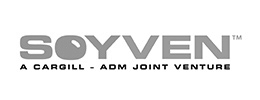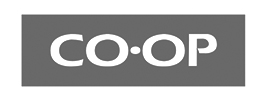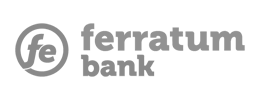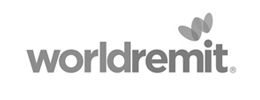Reconciliation software demand shakes up fintech partnership ecosystems
A special ReconArt feature first published on Bobsguide – the ultimate fintech resource, an innovative online platform that connects the providers of fintech solutions with the financial services professionals who need them.
Read the article here as well.
By definition, corporate process optimization propelled by digital transformation is a continuous effort. Technology innovation, pressure to stay ahead of the competition, and evolving customer needs demand enterprise act. Despite potential internal resistance, doubts and concerns about taking the leap forward, the real challenge is to stay determined, step out of this imagined comfort zone, and come to terms with the inevitability of change for the sake of improvement. Change is good: it builds resilience and opens doors. But if it’s not managed businesses can get crushed.
The notion of reconciliation process improvement crystalizes during critical periods – such as around deadlines, staff changed and new quarters – for financial reporting teams. At a certain point every up-and-coming company experiences the pains of growth and must adapt by revising its operational adequacy. With reconciliation, the breaking point usually takes place when the workload grows out of the manual framework and becomes unmanageable. Process automation shifts gears to take productivity to another level. This is imperative.
Once that’s realized, the form of ownership suitable for the company’s immediate and long-term needs as well as the allocation of project resources must be decided. It is not so much about picking the vendor, but rather choosing a model that would strike the balance between risk, costs, and benefits.
Initially, many corporates consider developing a recon technology solution in-house, relying on the competences of their F&A and IT departments. However, it often becomes apparent that the make versus buy consideration is a short debate when costs and resource consumption are collated. Also, the reconciliation software market offers best practice solutions capable of meeting industry specific requirements without heavy customization. It is the appropriate time to explore the adoption of a comprehensive reconciliation system from a technology provider.
Certain industries are heavily skewed towards large volume and complex reconciliation, because that is the nature of their business. We can profile these verticals. Invariably, they handle loads of transactions and/or many counterparts and more often than not they work in the B2C or C2C arena. They sell at low margin and compensate for it with a huge number of transactions.
Their sale cycle might be relatively short and the turnover runs at a fast pace. They might be in the B2B segment for that matter, but their production flow might involve a complex network of operations with lots of suppliers, or intricate distribution networks. Banking & finance, insurance, payment & remittance services, e-commerce & retail, travel & tourism, consumer leisure & entertainment, utilities & energy, manufacturing, education, and healthcare are some of the most common examples.
Companies turn to their ERP vendor for an external recon solution. With complex data reconciliation considered a niche requirement, few ERP vendors can afford a refined module dedicated to it. Rather it is a very basic functionality for general purposes and with limited application. But a growing segment of enterprises need a reconciliation tool that would respond to their business specifics and can offer ample flexibility to match their transaction scale. ERP vendors may not have the expertise or the priority to develop a whole new embedded module by request. However, through integration with a third-party solution they can complement their offering and add value for the client segment focused on transaction processing and settlement.
End customers are often wary of the time frames and resources required to pre-select and implement a new tool, however crucial. Through technology advisors / consultants, however, they can avail market intelligence and endorsed reconciliation solution provider shortlist. Consultants are cognizant of similar use cases and can detect patterns in their customers’ needs. They can contribute with their developed network of industry partnerships and their know-how in walking the digital transformation path. Consultancy firms can assist with different aspects of the project – gap analysis, gathering requirements, market research, leading the vendor selection process among others.
Post-sale activities and the deployment of the selected platform can also be covered if consultants have the technical staff and the knowledge to conduct the implementation themselves. Implementing a reconciliation solution requires a careful survey of the current client process and the mapping of that process into an automated framework. Besides that, they can plan and execute the smooth interaction and integration with the core business management systems and the migration from the legacy system. Another important milestone is the training of the staff to take control over the new tool and reveal its full potential in order to fulfil the objectives of the transformation project. Empowering internal specialists to be self-sufficient in new processes implementation and day-to-day operations handling is a central issue here.
Clients with urgent reconciliation needs who willing concentrate on other aspects of their business operations can resort to professional services. Thus they would retain the ownership and the control over the recon tool, but keep its F&A team out of its daily administration and transfer those responsibilities to professional service providers. Professional services give certain operational flexibility to focus on priority tasks within the company, but also preclude staff ramp ups and narrow the core team duties to monitoring and control functions. This setup is bound by the maturity of the client organization and its readiness to sustain a long-term tri-party relationship.
Outsourcing entirely the reconciliations processes shifts the workload and the related infrastructure management outside the company’s domain. On one hand, it delegates the daily transaction matching and / or monthly account recon to professional services providers from the BPO segment and disengage the internal teams. On the other hand, it resolves painlessly the troubles with managing automated recon product and the accompanying infrastructure. It might also have sense in terms of cost and risks of adding another system to the business process management setup. Then BPO organizations are the ones to evaluate what combination of qualified delivery workforce and digital tools would produce the greatest value for their clients while keeping operational agility and cost effectiveness at check.
Acquiring a reconciliation automation solution can be tailored to fit any organization strategy. In any case, it would take burdensome manual work out of the equation and open the avenue for continuous process improvements, risk mitigation and cost reduction with exceedingly better results in terms of effectiveness. Companies affected by reconciliation process shortfalls are not alone in their quest to overhaul this often neglected sphere of accounting and financial reporting. Undoubtedly, they have the necessary tools set to do that and more than one alternative to implement it in line with their business specifics and unique circumstances.

 follow our blog
follow our blog






















 Quick response
Quick response

